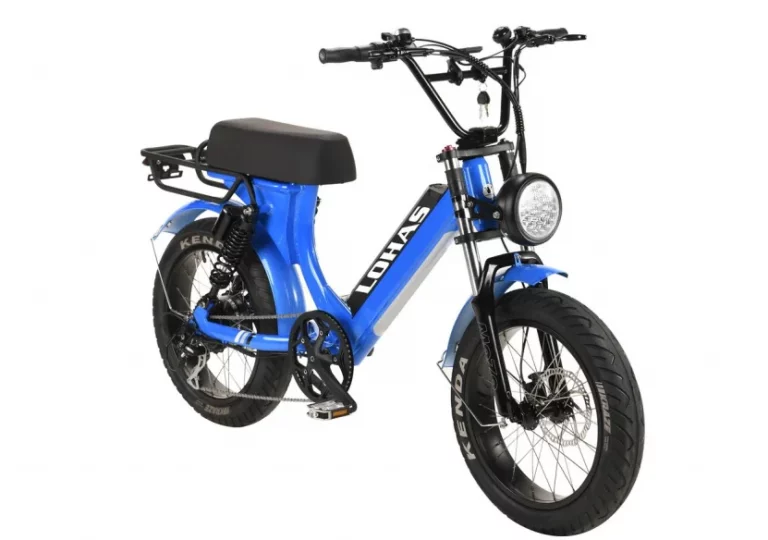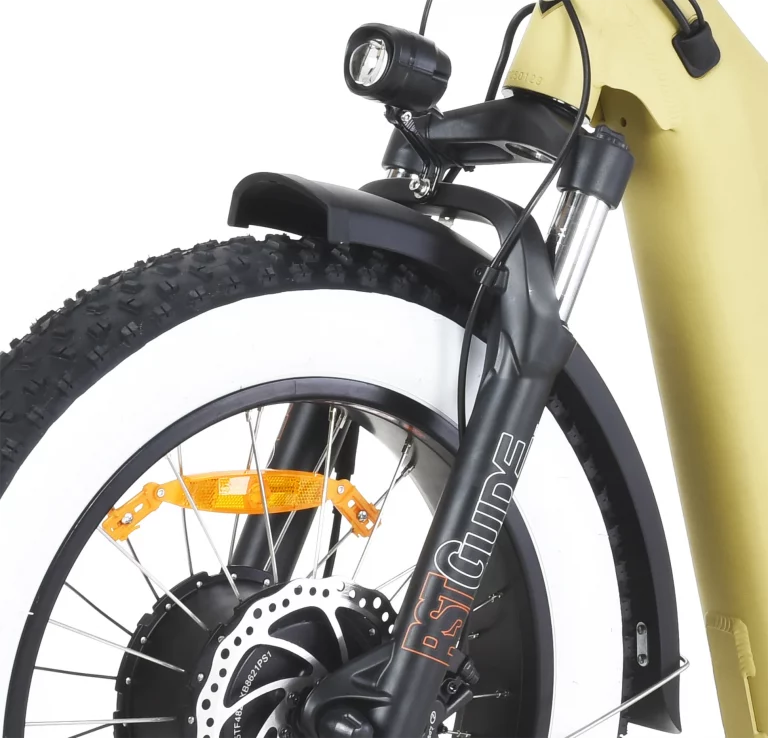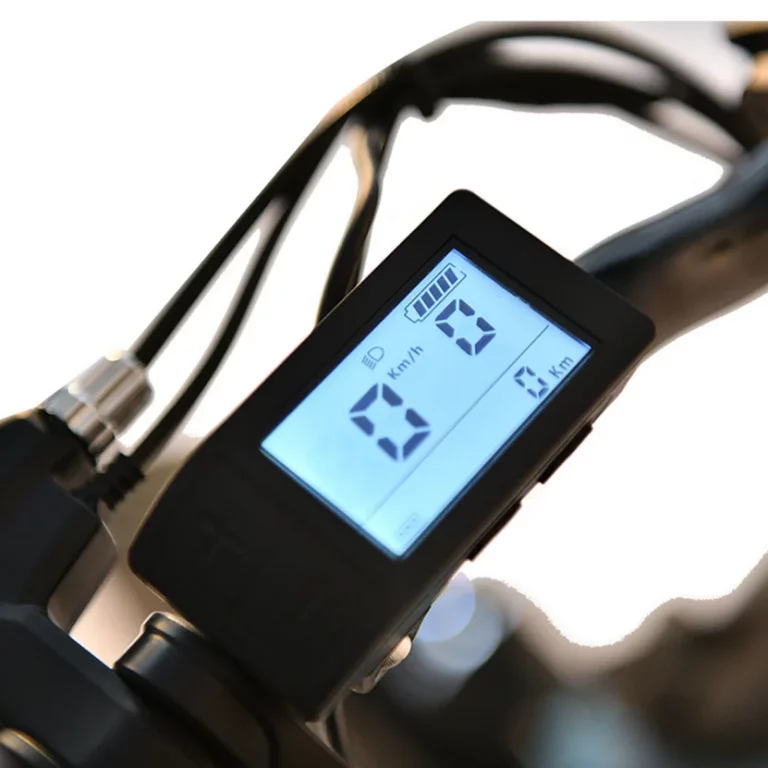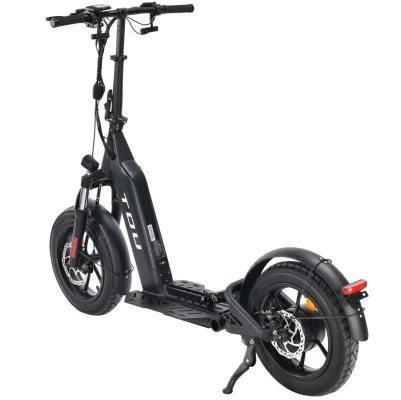Ebikes have surged in popularity as a convenient, eco-friendly alternative to traditional bicycles and motor vehicles. One common question potential users often have is whether it’s hard to pedal an electric bike, or ebike. This article will explore the various aspects of ebikes, comparing them to traditional bikes, and evaluating factors that influence the ease of pedaling.
As one of the famous brands in the production of electric bicycles and scooters, Yongkang LOHAS Vehicle Co., Ltd is committed to the research and development and manufacturing of related products. LOHAS Vehicle is a modern integrated enterprise specializing in the design, manufacturing, and distribution of electric bicycles and electric scooters, dedicated to the production of high quality electric bicycles and electric scooters.
Understanding the Basics of Ebikes
What Is an Ebike?
An ebike, short for electric bike, is essentially a bicycle equipped with an integrated electric motor that assists with propulsion. These bikes come in various styles, from mountain bikes to city commuters, but all share the common feature of electric assistance, making them different from traditional pedal-powered bicycles. The addition of motorized propulsion offers significant benefits, including ease of pedaling, especially on challenging terrains or during long commutes.
Key Components of an Ebike
Ebikes are composed of several critical components that work together to provide a smooth and efficient ride. Understanding these components can help clarify how they influence the pedaling ease of an ebike.
Motor
The motor is the heart of the ebike, available in different power ratings typically ranging from 250W to 750W or more. It provides the necessary torque to assist or fully propel the bike forward. The most common types are hub motors, located in the wheels, and mid-drive motors, positioned near the bike’s crankset.
Battery
The battery, usually lithium-ion, supplies the power needed to run the motor. Batteries vary in terms of capacity (measured in watt-hours) and voltage, directly impacting the bike’s range and performance. Higher capacity batteries allow for longer rides without the need for frequent recharging, making the ebike more versatile and dependable.
Pedal Assist System (PAS)
The Pedal Assist System (PAS) is a feature that activates the motor assistance when the rider starts pedaling. This system generally offers multiple levels of assistance, which can be adjusted based on the rider’s needs and preferences. The response of the PAS can be immediate and seamless, enhancing the overall riding experience.
Throttle
Some ebikes are equipped with a throttle, allowing riders to control the motor directly without pedaling. This feature can be particularly useful for quick acceleration or navigating through congested areas. Not all ebikes have throttles, but they offer an additional layer of convenience for specific riding conditions.
Comparing Pedaling an Ebike vs. a Traditional Bike
Effort Required
One of the most compelling benefits of an ebike is the reduced effort required to pedal. Traditional bikes rely solely on human power, which can be exhausting over long distances or hilly terrains. In contrast, ebikes offer motor assistance that significantly reduces the physical strain, especially when climbing inclines or riding against the wind. This motor support enables riders to cover greater distances with less effort.
Speed and Efficiency
Ebikes also have an edge when it comes to speed and efficiency. Traditional bicycles typically have a cruising speed limited by the rider’s fitness and stamina. However, with motor assistance, ebikes can maintain higher average speeds effortlessly. This improvement in speed ensures that users reach their destinations quicker and without getting excessively tired.
Terrain Adaptability
When it comes to terrain adaptability, ebikes outperform traditional bicycles. Hills and rough terrains pose significant challenges for standard bikes, demanding more energy and strength from the rider. In contrast, ebikes easily tackle these obstacles with motor assistance, enabling riders to navigate diverse environments without compromising comfort or stamina.
Factors Affecting the Ease of Pedaling an Ebike
Level of Pedal Assist
The level of pedal assist plays a crucial role in determining the ease of pedaling an ebike. Most ebikes come with various levels of assistance that can be adjusted according to the rider’s needs.
Low Assist Level
At a low assist level, the motor provides minimal support, making pedaling easier than on a traditional bike but still requiring significant effort from the rider. This setting is useful for those looking to get a more robust workout while still enjoying the benefits of a motorized boost.
Medium Assist Level
A medium assist level offers a balanced experience, providing enough motor support to make pedaling comfortable without removing the need for some physical exertion. This level is ideal for long rides or mixed terrains, where varying demands might be placed on the rider.
High Assist Level
For maximum ease, a high assist level can be selected. At this setting, the motor provides substantial support, allowing the rider to pedal with minimal effort. This level is perfect for steep hills, long-distance travel, or situations where the rider needs to conserve energy.
Battery Life and Capacity
The battery life and capacity significantly influence the ease and convenience of pedaling an ebike. Higher capacity batteries can sustain longer rides, reducing the frequency of recharges required. This is particularly beneficial for daily commutes or lengthy recreational rides. On the other hand, lower capacity batteries may necessitate more frequent charging stops, potentially interrupting the riding experience. It’s crucial to consider the battery capacity and life when choosing an ebike for your needs, as a higher capacity battery enhances the range and reliability, making pedaling less cumbersome.
Weight and Design of the Ebike
The overall weight and design of the ebike also impact pedaling ease. Heavier ebikes may require more effort to pedal when the motor assistance is not engaged, particularly in situations where the battery is depleted. Conversely, lightweight designs are easier to handle and pedal, even without motor support. The ergonomics of the bike, including frame design and seating position, also play a role in rider comfort and pedaling efficiency. An ebike that is well-designed and adequately balanced will provide a more pleasant and less strenuous riding experience.
Advantages of Using an Ebike for Daily Commute
Reduced Physical Strain
One of the most significant advantages of using an ebike for daily commuting is the reduced physical strain. The motor assistance alleviates the effort required to pedal, making it easier for riders to handle long distances and challenging terrains without excessive fatigue. This is particularly beneficial for individuals with physical limitations or those who wish to commute without arriving at their destination exhausted or sweaty.
Time-Saving Benefits
Ebikes offer considerable time-saving benefits. The enhanced speed and efficiency provided by motor assistance help riders reach their destinations faster than they would on traditional bicycles. This makes ebikes an excellent choice for those with busy schedules or lengthy commutes, reducing the overall time spent traveling and providing more time for other activities.
Environmental Impact
Ebikes present a more environmentally friendly alternative to motor vehicles. They contribute fewer greenhouse gas emissions, reduce traffic congestion, and lower the overall carbon footprint. By opting for an ebike for daily commutes, individuals can contribute to environmental conservation while also enjoying the convenience and efficiency that ebikes offer.
Tips for Effortless Pedaling on an Ebike
Selecting the Right Assistance Level
Choosing the appropriate pedal assist level is essential for an effortless riding experience. Riders should assess their current terrain and physical condition to select the most suitable level of assistance, ensuring optimal comfort and efficiency. For instance, a higher assistance level might be ideal for steep hills, while a medium or low level might suffice for flat trails.
Regular Maintenance Checks
Regular maintenance checks are crucial to keeping your ebike in optimal condition. This includes inspecting the battery, motor, and other components for any signs of wear or damage. Proper maintenance ensures that the ebike operates smoothly and efficiently, reducing the likelihood of breakdowns and making pedaling as easy as possible.
Proper Riding Posture
Maintaining a proper riding posture significantly influences pedaling ease and overall comfort. Riders should ensure that their seating position is adjusted correctly, with the handlebars and seat properly aligned. Good posture reduces the strain on muscles and joints, making the pedaling process more efficient and comfortable during long rides.
Addressing Common Concerns About Ebikes
Range Anxiety and Battery Life Concerns
Range anxiety is a common concern among potential ebike users. This refers to the fear of running out of battery power during a ride. Understanding the battery capacity and planning routes accordingly can mitigate this concern. Additionally, many modern ebikes are equipped with efficient battery management systems to extend the battery life and provide real-time monitoring, helping reduce range anxiety.
Legal Considerations and Regulations
When using an ebike, it’s important to be aware of the legal considerations and regulations in your area. Laws regarding ebike usage can vary, including speed limits, permissible assistance levels, and where ebikes are allowed to be ridden. Ensuring compliance with local regulations is crucial for a safe and legal riding experience.
Cost Implications
While the initial cost of an ebike may be higher than that of a traditional bicycle, the long-term benefits, including reduced commuting costs and lower environmental impact, can justify the investment. Additionally, the lifespan of high-quality ebikes tends to be longer, providing lasting value. Potential buyers should consider both the upfront costs and the long-term savings when deciding to invest in an ebike.
Summary: Is It Hard to Pedal an Electric Bike?
In summary, pedaling an electric bike is considerably easier compared to a traditional bike. The motor assistance, varying levels of pedal assist, battery capacity, and thoughtful design all contribute to a more effortless and enjoyable riding experience. Additionally, ebikes offer numerous advantages for daily commuting, including reduced physical strain, time-saving benefits, and a positive environmental impact. By understanding the key components and maintenance tips, riders can maximize the ease and efficiency of their ebike, addressing any common concerns along the way. Therefore, for those seeking a convenient, eco-friendly, and efficient mode of transportation, ebikes present an excellent solution.
Yongkang LOHAS Vehicle Co., Ltd covers an area of more than 18,000 square meters. We have two assemble line, and use advanced manufacturing equipment and techniques to produce high-quality electric scooters and electric bike that meet our strict standards. At the heart of our company is a dedicated R&D team comprising 20 professionals who contribute to e-bike design and innovation. To ensure the highest standards, our Quality Inspection team, consisting of 15 meticulous individuals, thoroughly check e-bike and e-scooter before shipment.






